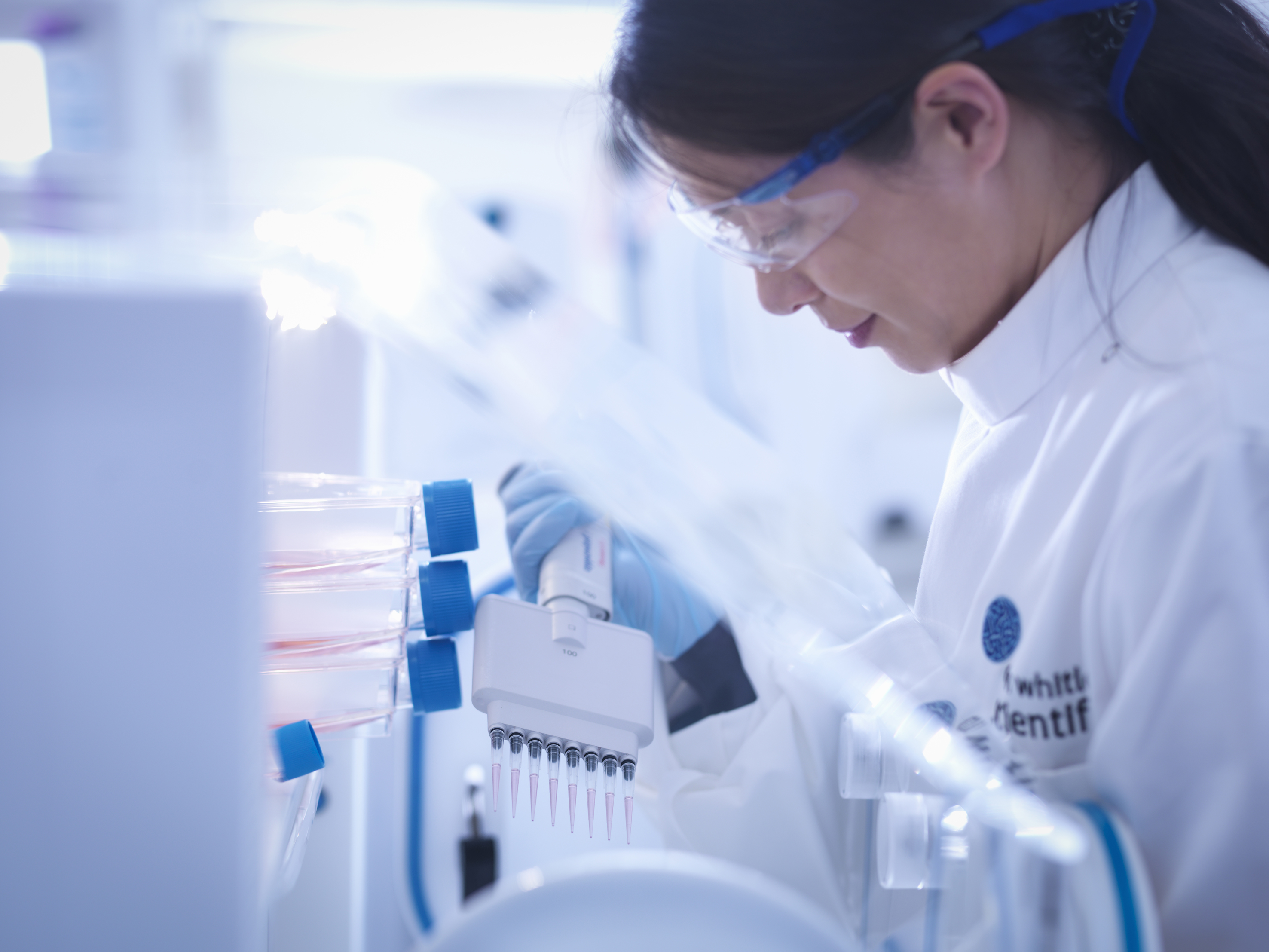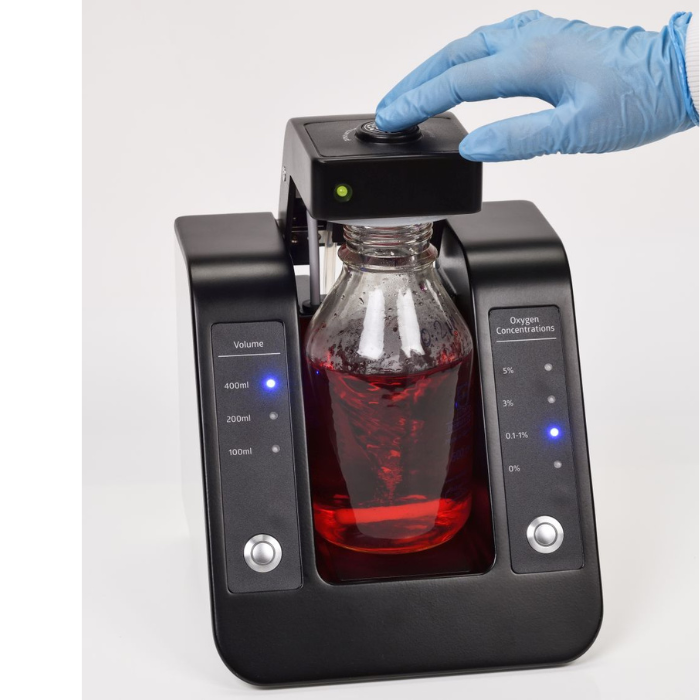
Myocardial infarction (MI), also known as a heart attack, is the leading cause of death in the USA [1] and there are up to 100,000 hospital admissions in the UK for MI’s each year [2]. The most common cause of MI is atherosclerosis within the coronary arteries (termed as coronary heart disease) but MI can also be caused by spontaneous coronary artery dissection, and risk factors include Diabetes, Hypertension, smoking and the use of some recreational drugs [1]. These ultimately lead to ischemia to a portion of the myocardium, thus causing localised hypoxia and necrosis.
Myocardial tissue has a low regeneration ability and therefore medical intervention is required after an MI to mitigate the loss of cardiomyocytes and permanent cardiac dysfunction, fibrosis formation and structural remodelling [1,3]. Recent studies have shown that the use of bone marrow mesenchymal stem cells (MSCs) have clinical benefits when transplanted into infarcted hearts due to their regenerative properties, however they have a low survival rate in the MI microenvironment due to the presence of reactive oxygen species (ROS) and hypoxia which causes apoptosis [3].
Ding et al. (2022) recently have researched the ability of an injectable hydrogel (RCGel) to prevent the loss of MSCs during transplantation and increase the therapeutic benefits, such as preventing the loss of cardiomyocytes and increase cardiovascular repair [3]. RCGel was assessed for its capability to scavenge ROS and generate oxygen via catalase action, and its effectiveness in encapsulating MSCs and protecting them from the harsh microenvironment [3]. The in vitro portion of the study was undertaken in a Whitley H35 Hypoxystation.
 The team first used a hydrogen peroxide injury model within their experiments to study the protective capabilities of the RCGel on MSCs in vitro by adding H₂O₂ to DMEM culture medium when seeding cell lines. They found that the MSCs/RCGel were protected from oxidative stress with cell viability being 95% compared to 75% of MSCs alone. RCGel also protected against apoptosis amongst MSCs; cleaved capsase3 expression was decreased and Bcl2/Bax expression was increased when analysed via Western Blot [3]. Furthermore, when cardiomyocytes were cocultured with the MSCs/RCGel in the presence of H₂O₂, the ROS significantly decreased and live/dead staining showed that RCGel increased cardiomyocyte survival (89%) compared to MSCs alone (70%) under oxidative stress [3]. RCGel was also able to alleviate hypoxia. Culturing of cardiomyocytes alone for 24 h intensified the levels of hypoxia, however coculture with MSC/RCGel showed an amelioration of hypoxia through the conversion of H₂O₂ to oxygen and H₂0. This all proves that in vitro, MSCs/RCGel reduces ROS, increases oxygen concentration, decreases MSC loss to oxidative stress and reduces apoptosis that improves cardiomyocyte survival.
The team first used a hydrogen peroxide injury model within their experiments to study the protective capabilities of the RCGel on MSCs in vitro by adding H₂O₂ to DMEM culture medium when seeding cell lines. They found that the MSCs/RCGel were protected from oxidative stress with cell viability being 95% compared to 75% of MSCs alone. RCGel also protected against apoptosis amongst MSCs; cleaved capsase3 expression was decreased and Bcl2/Bax expression was increased when analysed via Western Blot [3]. Furthermore, when cardiomyocytes were cocultured with the MSCs/RCGel in the presence of H₂O₂, the ROS significantly decreased and live/dead staining showed that RCGel increased cardiomyocyte survival (89%) compared to MSCs alone (70%) under oxidative stress [3]. RCGel was also able to alleviate hypoxia. Culturing of cardiomyocytes alone for 24 h intensified the levels of hypoxia, however coculture with MSC/RCGel showed an amelioration of hypoxia through the conversion of H₂O₂ to oxygen and H₂0. This all proves that in vitro, MSCs/RCGel reduces ROS, increases oxygen concentration, decreases MSC loss to oxidative stress and reduces apoptosis that improves cardiomyocyte survival.
All of these findings were then applied in vivo. MI was induced in a rat model and then MSCs/RCGel was injected into the site to examine MSC retention and cardiomyocyte viability after transplant [3]. Using bioluminescence, MSC survival was demonstrated to be significantly higher in the MSC/RCGel group on days 1, 3 and 5 compared to the MSC only group [3]. Moreover, the MSC/RCGel reduced apoptosis rates to 7% of apoptotic cardiomyocytes present at day 3 after MI, and survival of cardiomyocytes 28 days after MI, within the affected area, was 13% compared to 3% in control group [3]. The MSC/RCGel group also had a significantly
 increased vascularisation in the affected and border areas of the myocardium, proving the injectable promotes angiogenesis and improves cardiac after an MI [3]. These findings could improve the efficiency of cell-based therapy for the treatment of MI.
increased vascularisation in the affected and border areas of the myocardium, proving the injectable promotes angiogenesis and improves cardiac after an MI [3]. These findings could improve the efficiency of cell-based therapy for the treatment of MI.
Using a Whitley Hypoxystation in your research? The Whitley Media Conditioner provides an alternative to leaving media to condition for 24 hours and can equilibrate your liquid culture medium rapidly to ensure even greater accuracy in your research.
Written by DWS Microbiologist, Charlotte Austin
References
- Ojha N, Dhamoon AS. (2023) Myocardial Infarction. StatPearls Publishing. https://www.ncbi.nlm.nih.gov/books/NBK537076/
- British Heart Foundation (April 2023) BHF UK CVD Factsheet. https://www.bhf.org.uk/informationsupport/conditions/heart-attack
- Ding H, Ding J, Liu Q, Lin J, He M, Wu X, Chen X, Xiao C, Ren T, Zhu Y, Gao C, Hu X, Wang J (2022) Mesenchymal stem cells encapsulated in a reactive oxygen species-scavenging and O2-generating injectable hydrogel for myocardial infarction treatment. Chemical Engineering Journal. Volume 433, Part 2, 133511, ISSN 1385-8947


 en
en

 xEnglish
xEnglish